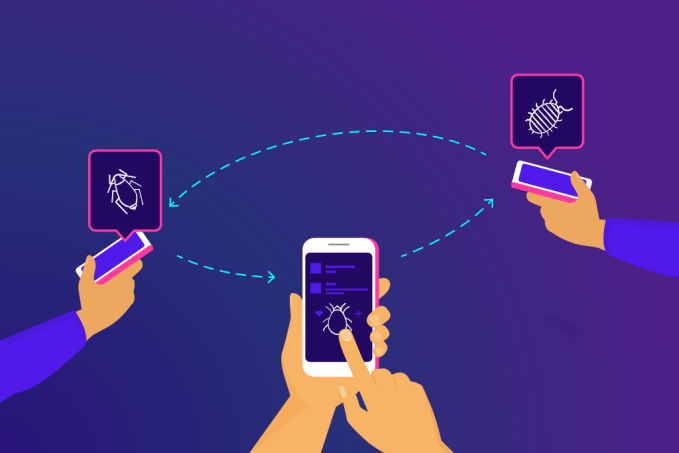Software testing is an often neglected area of business, sometimes resulting in the loss of millions (and even billions) of dollars. Remember how an Amazon software glitch cut all item prices to one cent? When Uber’s notification malfunction resulted in a €45 million lawsuit against the company? How TSB rushed its customers to a poorly tested platform, paralyzing 1.9 million accounts? Or how Cyberpunk 2077’s countless bugs wiped out years of hard development work and turned the game into an embarrassing meme, incurring long-term reputational damage and a billion-dollar loss? In total, software errors cost the US over $2.5 trillion dollars each year. Why keep making the same mistakes when these crises can be easily averted?
Being software testing enthusiasts, the experts at QAwerk know the true cost of poor software quality. But not all businesses do. Back in 2016, we racked our brains on how to convey our message and showcase the importance of software testing while illustrating how bugs frustrate consumers. So we started testing apps for free, and that’s how our Bug Crawl initiative was born.
Making software better

Image Credits: QAwerk (opens in a new window)
It’s impossible to build a 100% bug-free product, yet bugs are known to be one of the factors contributing to high customer churn. On average, about 40% of US-based consumers will abandon a mobile app if they have to deal with technical issues, and the same number of users will go to a competitor should they offer a better app. That is why the product’s first impression is so crucial. What’s more, the longer businesses postpone testing their product’s quality, the costlier it gets for them to fix bugs arising after the release. According to an IBM study, fixing software errors in post-production is 15 times more expensive than eliminating them early on.
Having first-hand experience in detecting and preventing software malfunctions, we know this data is true-to-life. We also understand the challenges that prompt some companies, small and large, to release products with bugs, among which are:
- Decreasing time to market
- Saving costs
- Lacking QA resources
It pains us to see how promising and innovative products fail to get the recognition they deserve because of technical issues that, for some reason, were overlooked by the delivery team. By showcasing brands the areas that require immediate attention, we help them fine-tune their products, following our mission of making software better.
Mastering our craft

Image Credits: QAwerk (opens in a new window)
Bug Crawl turned out to be not only a way to give back to the business community but also an excellent opportunity to learn and polish our expertise in various industries. We’ve tested mobile apps and SaaS platforms from some of the most popular categories, such as communication & social, entertainment, shopping, travel, productivity tools, photo & video, careers & education, real estate, sports, books, and games. While each product is unique, we’ve encountered the same bugs over and over again, regardless of the app’s platform or market niche. To name a few:
- Crashes: This is the biggest culprit behind high uninstall rates. While the reasons why apps crash vary — from poor memory management and improper API integration to network problems and spaghetti code — it all comes back to inadequate testing. Tap every button, icon, arrow, submit all forms, try using your app with the Internet off, and make sure you can save your data. You’ll be surprised to see how many issues are there to be fixed.
- Functional bugs & business logic flaws: Have you ever wondered why an Android app would have an option to sign in with Apple ID? What’s the use of leaving empty reviews or tapping non-responding emergency call buttons? And what’s the deal with these constant page reloads? Messed up a single field? Start the registration process from scratch. Created a new folder? Reload your app before you see it. Can’t edit your credit card details? Well, you had your shot, so next time you’d better be laser-focused because the delivery team hadn’t really thought of giving you a second chance.
- UI issues: Although often perceived as insignificant, UI inaccuracies may undermine the product’s overall feel and the brand’s authority. So far, we’ve witnessed everything from cramped or overlaid text, cropped images, and elements going beyond their containers to icons covering the order price and improperly wrapped email addresses. Switched to the dark theme to reduce the eye strain? …But now everything is black, including the text… Well, maybe stick to the light mode for a couple of weeks before the developers get to that “minor” bug.
- Authorization issues: To our surprise, some brands may release apps with no email or password validation at all, allowing users to sign up with fake emails, restore a password with a non-registered email, or use only space characters in passwords. Overlooking these basic validation rules exposes consumers to security threats, disables the option to easily change a password, and creates a mess in the client database.
- Missing links & Wrong redirections: No one ever reads Terms & Conditions, right? Why bother adding links to it? Privacy policy, returns policy, and social media icons are the first areas to inspect. As for wrong redirections, they bring even more harm. Imagine a user spending hours searching for the needed item, be it clothing, digital camera, or wedding decor, and then being taken to a wrong product page. Yeah, that’s a bummer worth some hundreds or even thousands of unhappy customers.
- Confusing error messages & hints: These mistakes usually come to the surface when the user enters incorrect data into input fields, such as their username or password, or when their Internet connection is disabled. Rather than providing clear-cut information on what went wrong, poorly tested apps often make consumers play a guessing game, displaying pretty generic “Something went wrong,” “No data load,” “An error occurred,” or “Please try again.” On top of that, the user may also discover that their city or street no longer exists just because they typed the name manually instead of choosing it from the list of suggested items in the drop-down.
- Broken layout: A surefire way to break an app’s layout is to change the view mode to landscape. You will be able to see some broken menus, messed-up lists, and all kinds of distorted designs. As for the web platforms, nothing breaks like a layout on a small screen. Brands tend to develop for the latest device models, neglecting a percentage of consumers who use slightly older gadgets.
- Malfunctioning filters: Consumers love filters because they allow them to find the needed items in less time. However, when a filter does not perform as expected, the user may spend even more time on the app, trying to figure out why only female accounts are displayed in their dating app, how come pop songs appear in their rock music suggestions, or why the furniture block lists plumbing materials.
- Localization issues. In an attempt to target a broader audience, businesses make sure their apps and platforms are available in as many languages as possible. To speed up the whole localization process, some may resort to machine translation, which then results in overflowing and often confusing content. One more common issue we’ve faced is that delivery teams may forget to translate some buttons, titles of less popular pages, or chat pop-ups.
Building partnerships
We were doing our thing, testing apps for free and feeling good about helping startups and well-established brands level up their products. Bug Crawl’s goal was never to discover potential business partners: we did it expecting nothing in return. When we started, we couldn’t predict that our bug reports would land us a client. However, since 2018 we’ve started receiving Bug Crawl requests on a regular basis. The first brand that contacted us was Unfold, an app that we’ve supported throughout their entire journey from a buggy story-making tool with limited functionality to an award-winning app with billion-plus users worldwide. In 2019, Unfold was acquired by Squarespace, a leading website builder and hosting provider, and we attribute part of this success to Unfold’s continuous investment in its software quality.
Nowadays, more and more tech agencies position themselves as true business confidants rather than mere service providers. Building a mutually beneficial partnership rather than a client-contractor relationship is exactly what makes it work with clients. When we have the freedom to voice our concerns, suggest new features, and participate in important product discussions, we feel like equal members of the client’s internal team, which drives our engagement even further. Our clients’ tremendous progress proves something we’ve always emphasized to our prospects: having a trusted technology partner by your side always pays off in the long run.
Final thoughts
Don’t get us wrong; we understand that software development is a never-ending triage. To stay on schedule and on budget, some brands may have to decide what bugs are tolerable and what are real showstoppers. However, decision-making gets much easier when you have an unbiased perspective on the matter, such as a bug report prepared by an external QA team. Testing software for free is not a utopia; it’s something we can do and will do to help as many brands as possible polish their products and reevaluate their approach to software testing.
We’ve received positive feedback from many brands who were able to fix the bugs before the product reached a larger community. All things considered, maintaining software quality on a decent level is key to preventing heavy financial losses and reputation damage caused by buggy products.
